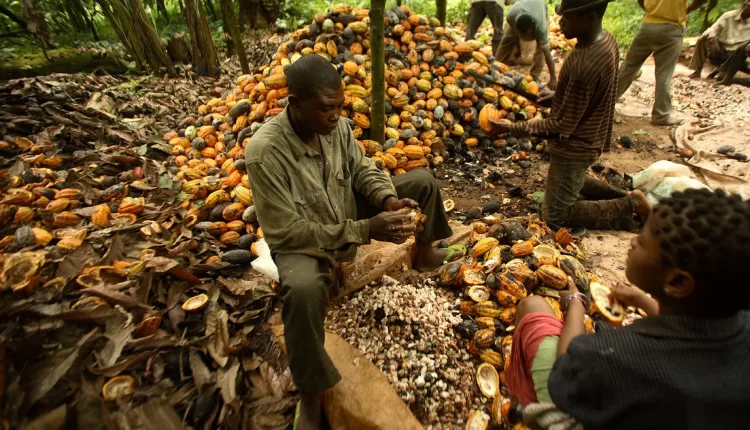Nigeria Eyes LID For Smallholder Cocoa Farmers To Improve Livelihood
The Cocoa Farmers Association of Nigeria (CFAN) says it is hoping to tap into Ghana and Cote d’Ivoire’s $400 per tonne Living Income Differential (LID) to improve the livelihoods of its smallholder farmers.
West African neighbours, Ghana and Cote d’Ivoire, also the world’s top two biggest producers of cocoa beans introduced the LID to tackle extreme cocoa farmer poverty.
Buyers of cocoa from the two countries pay an extra $400 on the price of every tonne of cocoa, an amount paid directly to cocoa farmers to enhance incomes.
CFAN has identified the LID for Nigerian cocoa growers as part of measures, including farm irrigation and improved cocoa variety, among others to boost Nigeria’s cocoa production.
The Association has set an ambitious plan to raise the country’s cocoa production from the current 340,000 MT to 500,000 MT by 2024.
It has a target of becoming the largest cocoa producer in West Africa by the year 2027, with sustainable cocoa beans production remaining as its core cocoa policy.
“This ambition is anchored on improved cocoa variety, national cocoa farm irrigation, the improvements of the livelihood of our smallholder cocoa farmers via the collection of $400 Living Income Differential(LID) and the overall improvements of the cocoa sector from research, inputs, production, value addition, processing to export,” said Adeola Adegoke, National President of CFAN.
The Cocoa Farmers Association of Nigeria (CFAN) blames International Monetary Fund (IMF)-recommended Structural Adjustment Programme implemented by the Nigerian government in the 1980s as the bane of the country’s cocoa sector.
According to the Cocoa Farmers Association of Nigeria (CFAN), the abolition of the cocoa commodity board under the programme heralded the numerous challenges confronting farmers and other stakeholders.
Adeola Adegoke, the National President of CFAN, enumerated the challenges confronting Nigeria’s cocoa value chain to include a lack of coordination of cocoa production, aggregation and marketing, as well as disruption of quality inputs and good agricultural practices as embraced by international stakeholders, The Guardian reported.
The result is the current uncoordinated sector where cocoa production has fallen from around 590,000 tonnes per annum in the 1950s.
The myriad of bottlenecks notwithstanding, Adegoke insists the CFAN is determined to raise the current profile of the Nigeria cocoa industry by revitalising production.
To this end, the Cocoa Farmers Association of Nigeria has commenced the distribution of a cocoa handbook to smallholder cocoa farmers across the country.
The handbook, which has also been made available to farmers at Akure, Ondo State, has content designed to promote Good Agricultural Practices (GAP) in cocoa production for improved productivity and better income.
The CFAN President noted that “the need to enlighten and train our cocoa farmers on responsible use of pesticides, good agronomical practices, child labour eradication, certification, traceability, avoidance of deforestation, ecosystem and climate change,” necessitated the production of the handbook.
The association, in conjunction with Cocoa Research Institute of Nigeria (CRIN), EBAFOSA, Harvestfield Industries Limited, Federal Ministry of Agricultural and Rural Development, Federal Ministry of Industry, Trade and Investment, cocoa-producing state governments and other stakeholders, is distributing the handbook to farmers free of charge to boost production in a sustainable manner.
Adegoke described the GAP handbook as “our own contribution to the sustainability of the cocoa supply chain in Nigeria as the singular commodity that gives the highest foreign exchange earnings, apart from crude oil from the recent figures released by the CBN and provides incomes to more than two millions cocoa families and over $100 million investment in the sector.”
CFAN was formed to fill the gap in the cocoa industry created in the wake of the 1986 abolition of the cocoa board under the IMF’s Structural Adjustment Programme (SAP) in Nigeria.
Adegoke said the association has been representing the interest of smallholder cocoa farmers in Nigeria since 1999 when it was formed, helping to address some of the challenges.
The abolition, Adogoke lamented, had robbed the sector of strong and coordinated stakeholders such as buyers, processors and exporters.
“We can conclude that the birth of CFAN has strengthened the unity, voice and coordination of smallholder cocoa farmers,” said Adegoke.
He added, “let me acknowledge the giant strides recorded in the cocoa sector by the various past governments of Ondo State, especially the feat recently recorded by Governor Rotimi Akeredolu, for making the state to remain the highest cocoa-producing state in Nigeria with the current production of 85,000 tonnes of cocoa beans, representing 40 per cent of the total in Nigeria.”
He recalled that Nigeria was once rated as the second-largest cocoa producer in West Africa in the 1950s with 590,000 tonnes of cocoa beans yearly.
- Illegal Mining Threatening Ghana’s $230M Cocoa Rehabilitation - April 10, 2024
- Ghana Raises Cocoa Farmgate Price by 58.26% to GHC2,070 per bag - April 5, 2024
- New Standard for Measuring Cocoa Household Income Launched - April 5, 2024
